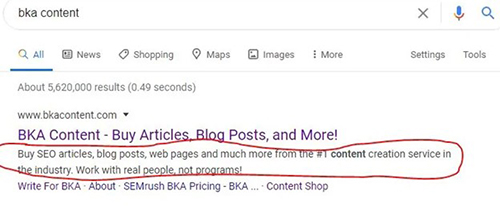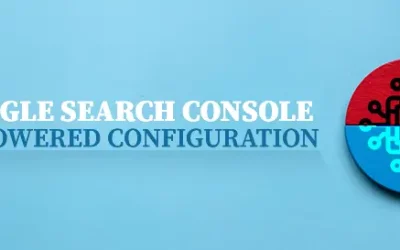In today’s digital era, the need of attaining top rankings in search engine results is very important. Analyzing the fundamentals of how search engines function and how rankings are calculated is more important than ever before. Out of the different aspects that determine the success of an SEO campaign, keyword placement and selection is an important factor that cannot be ignored. When it comes to optimizing web pages for better search engine rankings and improved click-through rate (CTR), keyword placement plays a critical role.
Using relevant, trending keywords that resonate well with the target audiences help attract better search rankings, more qualified search traffic and remain par with the competition. Investing in content writing services provided by digital marketing experts will provide adequate guidance to select the keywords carefully.
How Do Keywords Matter for SEO?
Regarded as the main outline of the content, keywords can be either words or phrases which are actively being entered as queries in search engines. Since search engines use keywords as a jumping off point when filtering search results, it is important to make sure to know how to use keywords in the content correctly so that the content has a better chance of being found, indexed and ranked. Proper keyword placement occurs when they are spread out strategically throughout the content so that the search engines can properly index the website for those relevant keywords. Besides, it entices searchers to visit a page and encourage them to stay on that page. Correct and strategic keyword placement can help the website content rank better for the chosen keywords in the SERPs. Choosing the right keywords and putting them in the right places is an essential element of SEO. This brings people with relevant search queries to a website.
Keywords matter as they tell Google and other search engines, the topics that the content covers. The search engine spiders crawl the content to find particular terms that articulate the ideas that the content covers so that it can better match users with the right websites. It is important to note that although the search engines do look at keywords as a means of determining topics and relevance, unnecessary keyword stuffing will affect the rankings. Instead, websites need to focus on developing natural-sounding content that employs the right keyword where required, but also makes use of related terms.
How to Choose and Use Keywords on a Page
Uncovering the right keywords for the content is called “keyword research”. Keyword research is performed by looking at the search trends for different words, that helps understand which specific terms and ideas have been drawing a high number of searches. Though people agree on various criteria as to what makes appropriate keywords, there are three main elements to a good keyword that include – specificity, long-tail keywords and realistic terms of search.
When talking about how many keywords to focus on in a page, the answer depends a lot on the keywords used, how related they are to one another, and whether they help push the message of the content forward. There are three main types of keywords for SEO – primary keywords, secondary keywords and additional keywords. Primary keyword should be the main focus of the entire article, so the title and ensuing content should reflect that. Secondary keywords are complementary keywords to the primary one, but just slight variations. Usually a main topic will include 3-5 main talking points so using a handful of those secondary keywords makes sense. On the other hand, additional keywords are just any other related keywords that are phrased or spelled differently from the first two categories but mean the same thing.
Where to Use Keywords for SEO in Content Writing
There are some key techniques that can be applied to decide upon the keyword. As an initial step, by doing a basic research on the list of the various terms associated with the topic at hand, it is possible further extrapolate on those terms or pick one of the terms that suit specific needs. After deciding on the keywords, search those keywords on Google and scroll to the bottom of the page to find the frequently searched terms. Placement and spread of the content writing keywords also plays a major role in achieving higher ranks on Google search. The placement of keywords should flow naturally with the context of the sentence.
Generally, it is quite easy to say to add keywords for SEO, but implementing it is a different matter entirely. In fact, there are certain rules and best-practices for adding keywords to a website that can make SEO efforts much more valuable. Inserting keywords into the content involves the following steps –
-
- Use Keywords in Meta Description – This is one of the most basic ways to add keywords for SEO, but it’s often overlooked. The meta description acts as a simple summary of what the content is about, so placing the keyword in this summary helps Google to better filter search results. It is a great approach to have one or two of your most essential keywords associated with the portion of the page that search engines see first. Metadata usually consists of 160 characters, which is a basic summary of your page’s content. When users use search engines to find a keyword phrase, this description appears beneath the page name and URL. A Meta Description is a 160-character (or 20-25 word) description of what your page is all about and shows up under a page name and URL when people search for a keyword phrase on search engines.
- Insert Keywords in SEO Title Tag – The title tag is the name of the page that users will see on search engine results pages (SERPs) when they search a keyword phrase. This title will be clickable from the SERPs and will take the user directly to a page. As per SEO experts, the starting paragraph is an extremely crucial factor that determines the content ranking on Google. The reason for this is that the first 100-200 words of an article are generally where a content writer establishes the context for what will be addressed. Most readers would only read the rest of an article if the opening is strong. Using a keyword in the title may be highly beneficial if it can be utilized naturally.
- Use Keywords in Article Title – If possible, place the keyword in the title of the content. Since Google pairs this title header with meta description to create a picture of what your content is about, having the keyword in the title is very helpful as long as it can be used naturally. If the keyword can’t be used naturally in the title, try to use a variation that still gets the point of the article across.
- Use Keywords within the First 200 Words – Many experts believe that Google gives more weightage to the first 200 words in the content. This is because the first 100-200 words of an article are where a content writer sets up the introduction of what will be discussed. Since most readers only continue reading an article if the introduction is good, it stands to reason that it could be a ranking factor as well. As, Google scrutinizes the first 200 words of a content post, it is very important to make sure that the primary keyword is placed within the first sentence or paragraph. Similarly, it is also important to use at least one secondary keyword in the first 200 words as well (though not in the first sentence). In short, the focus of the content (and introduction) would be the top of the primary, filled in by secondary and lastly additional keywords to make up an entire keyword structure and strategy for that piece.
- Insert Keywords in a Natural Manner – In an SEO-centered digital world, it is quite easy to forget that the reader actually comes first. Never compromise the reader’s ability to be engaged, informed and enlightened by the content due to bad keyword placement. One way to use keywords more naturally is to utilize “Stop Words” in your keyword writing. Stop words are words that can be added within keyword phrases to help them read more naturally without reducing their ranking value.
- Use Keywords in the Last 200 Words – Just like how an introduction of an article is important to keyword rankings, the conclusion (or last 200 words) is also crucial. Therefore, try to include primary keywords again near the last or second-to-last paragraph and include a secondary keyword if possible. For instance, when it comes to blog posts, it is usually a good practice to include a call-to-action (or CTA) in the very last paragraph, so try to include the primary keyword there. If not, get it in that second-to-last paragraph.
-
- Use Keywords in Headings (H1s, H2s, H3s) – A long paragraph content with no end in sight is intimidating and often skipped completely. Headings can be used to break up content and help attract and move the readers visually along to the most important points or the ones they are most interested in. When a keyword is used in headings, it brings more emphasis to the meaning and importance of the keywords. This helps the search engines to know how relevant those keywords are to your content. From an SEO standpoint, headings may be even more important. The HTML tags used to identify H1s, H2s, H3s, etc. are also ranking signals for Google to know what is most important in the content. Adding keywords to headings in content is the best way to attain rank for multiple keywords. Here is an example of where to find heading formats in a text editor –
- Use Keywords in Anchor Text Links – When a keyword is used as an anchor text link in the content, it implies that there is a place to find even more information regarding that word. This places added emphasis on the keyword and the relevance it has to the content that’s being linked to. Using keywords as anchor text links in your articles can help other pages on your site. This is also known as creating an internal link structure showing Google where the most important articles are for exact keyword phrases.
- Use Keywords in Image Alt-tags – When it comes to keyword usage, using keywords in an image alt-tag can help it to be shown during image searches. This enables users to be led to the content in a roundabout way. Images and content writing (and videos for that matter) are a perfect option when it comes to user engagement. Images not only help break up the text and give it a context and personality, but they also contribute to the SEO side of a website.
- Use Keywords in URL – When it comes to adding keywords to your website, try to place the primary keyword in the main page URL of the content. If the steps abovementioned are done and the primary keyword is placed in the title, it should be in the URL automatically when you go to publish it. But even if the title is similar to the main keyword but doesn’t include it completely, it is important to pull your page URL to include it after the fact.
Many people analyze the significance of using appropriate keywords in their website content, but may be unaware how to choose the right keywords for digital marketing. Never overuse keywords just for SEO purposes. Proper keyword placement within web pages can enhance the visibility of your website and attract more organic traffic. Google is much smarter than it was in the early years of search and can easily analyze whether the keyword is used just for SEO purposes, or in a legitimate way to help readers find relevant information to help answer their questions. A professional digital marketing agency outsourcing SEO services can help choose the right keywords that are relevant to the website content and thereby improve the traffic on the website.
Stand out from the competition with outstanding content!
Call now at (800) 941-5527 to see how our team can help!






